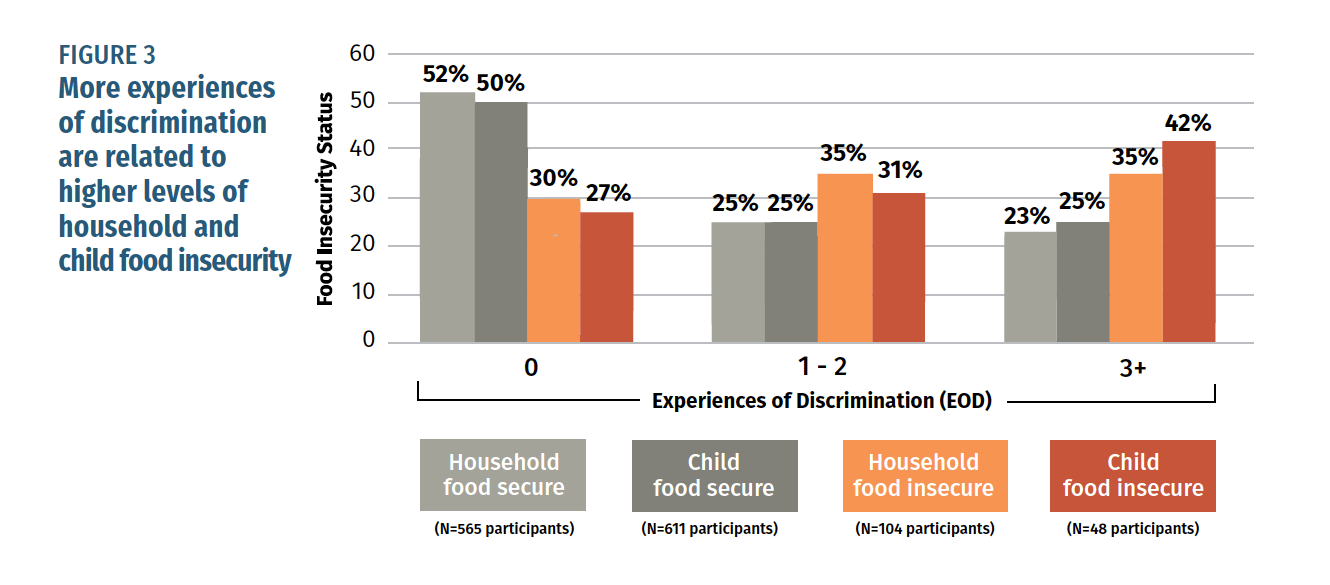Report Finds Discrimination Driving Disparities in Food Insecurity

- Drexel Selects New, World-Class Life Sciences Building at 3201 Cuthbert Street for Medical Research Operations
- Turn Happy Places and Memories into a Happy New Year
- Breakthrough on Gene Therapy for Hereditary Spastic Paraplegia
- Drexel Environmental Collaboratory Releases Cross-Sector Findings on Severe Weather Recovery Challenges

Lifetime experiences of racial and ethnic discrimination are strongly linked to food insecurity in Philadelphia, says a new series of reports released today from researchers at Drexel University’s Center for Hunger Free Communities in the Dornsife School of Public Health.
“When people think about how to solve hunger, we need to go deeper and think about the issues that are exacerbating the problem,” said the report’s lead author Mariana Chilton, PhD, MPH, a professor in the Dornsife School of Public Health and director of the Center for Hunger-Free Communities. “We see that if mothers experience at least one form of discrimination, they are more likely to face food insecurity when compared to those who did not experience discrimination. And this happens in most facets of life in Philadelphia — at work, in school, at the doctor.”
From 2015 to 2017 the researchers surveyed 669 caregivers (95 percent female) whose children are patients at St. Christopher’s Hospital for Children in Philadelphia. The report, “From Disparities to Discrimination: Getting at the Roots of Food Insecurity,” is part of Children’s HealthWatch, a multi-site child health surveillance study, coordinated in Philadelphia by the Center for Hunger-Free Communities.
Participants were asked how many times they faced discrimination (defined as “experiences of being prevented from doing something, being hassled, or made to feel inferior due to race) in 10 different settings or situations:
- At school
- Getting hired at work
- Searching for housing
- Applying for assistance programs such as SNAP (food stamps), WIC, or welfare
- Receiving medical care
- Receiving services in a store or restaurant
- Getting credit, bank loans, or a mortgage
- On the street or in a public setting
- By the police or in courts
The researchers found that experiences of discrimination were strongly associated with household and child food insecurity. If the caregiver reported any number of experiences of discrimination, they were more likely to report household food insecurity compared to those who did not experience any discrimination. Food insecurity was measured by the USDA 18-item Household Food Security Survey Module.

For example, women who reported discrimination at school were 60 percent more likely to report household food insecurity compared to those who reported no experiences with discrimination (22.2 vs. 13.9 percent). Women who reported discrimination while applying for a job were 77 percent more likely to report household food insecurity compared to those who reported no discrimination experiences. Women who reported discrimination in the workplace, from police and in public settings, reported similar rates of food insecurity as those who reported discrimination during the employment search process.
In Philadelphia, 1 in 5 people suffer from food insecurity. Chilton and her colleagues write that their findings can be used to help address and prevent future discrimination, and, in turn, reduce hunger in the city.
The report offers several policy changes, including training teachers and health care workers, strengthening the Fair Housing Act of 1964, and implementing citywide fair workplace policies, such as paid family and sick leave. The report also calls for ending the criminalization of minor offenses, as well as eliminating “stop and frisk” tactics.
The five-report series can be viewed at the centerforhungerfreecommunities.org. Children’s HealthWatch is a nonpartisan network of pediatricians, public health researchers and policy experts.
Drexel News is produced by
University Marketing and Communications.